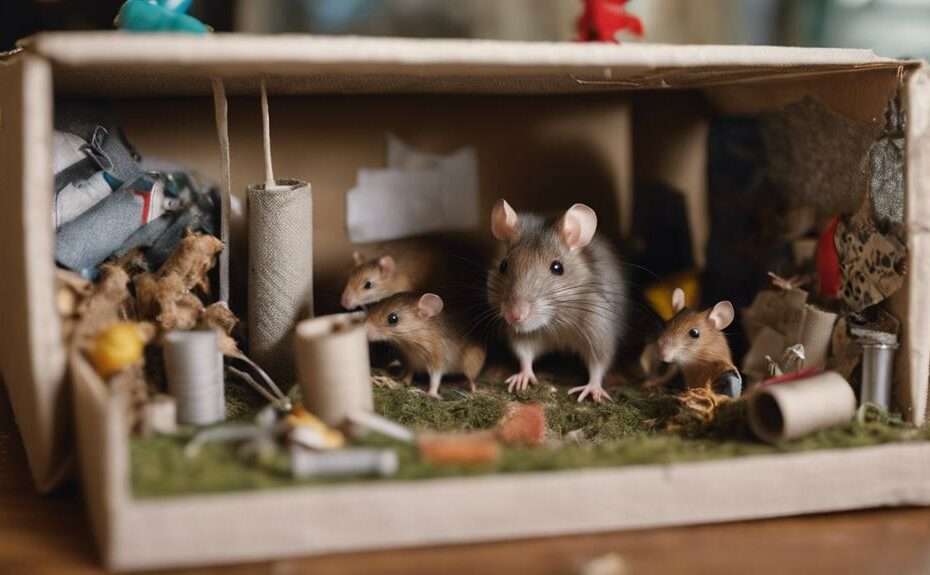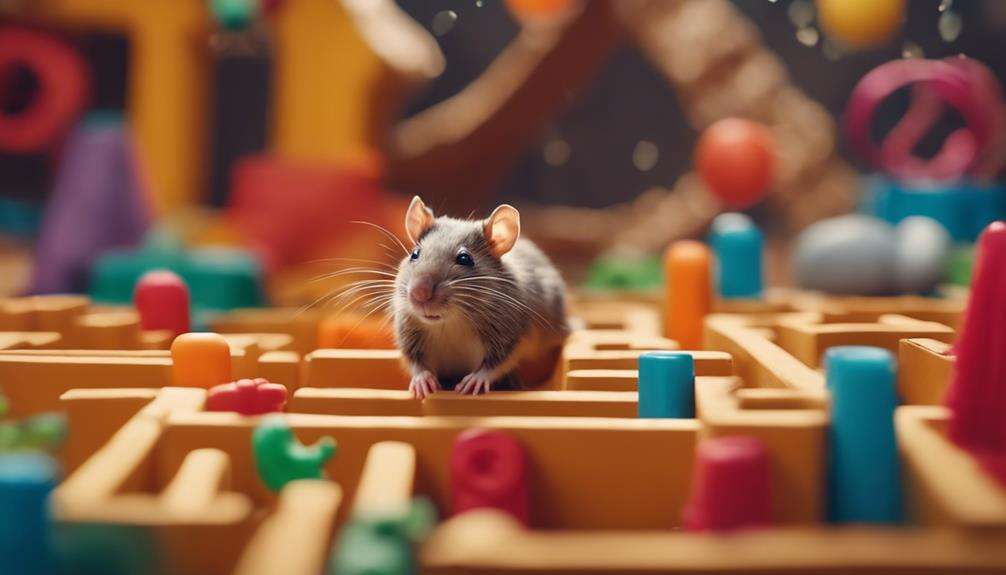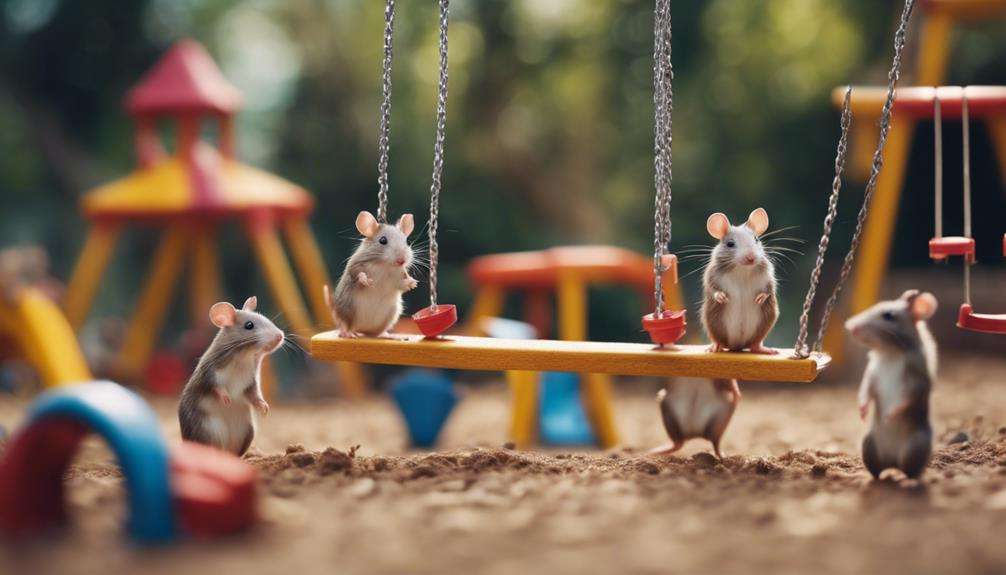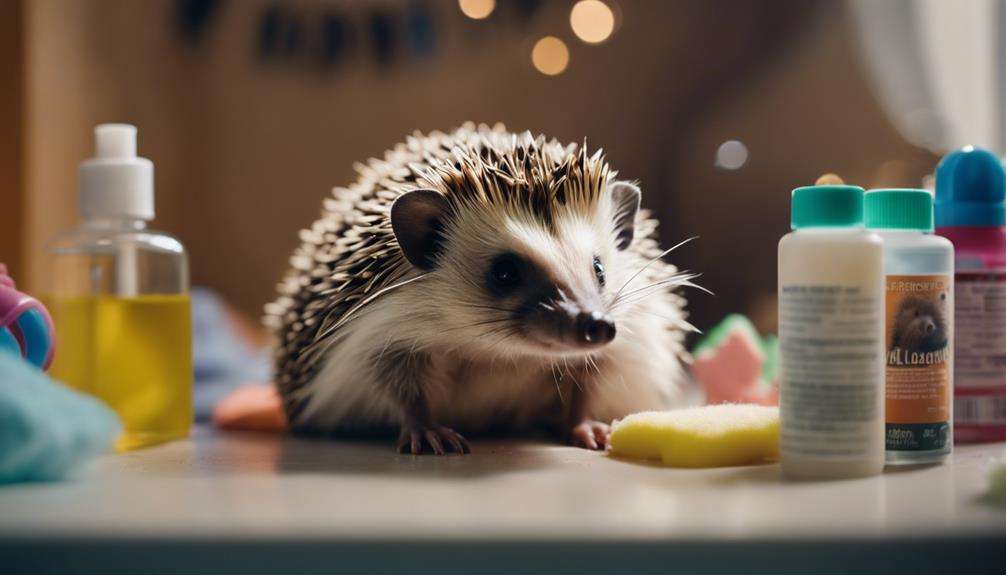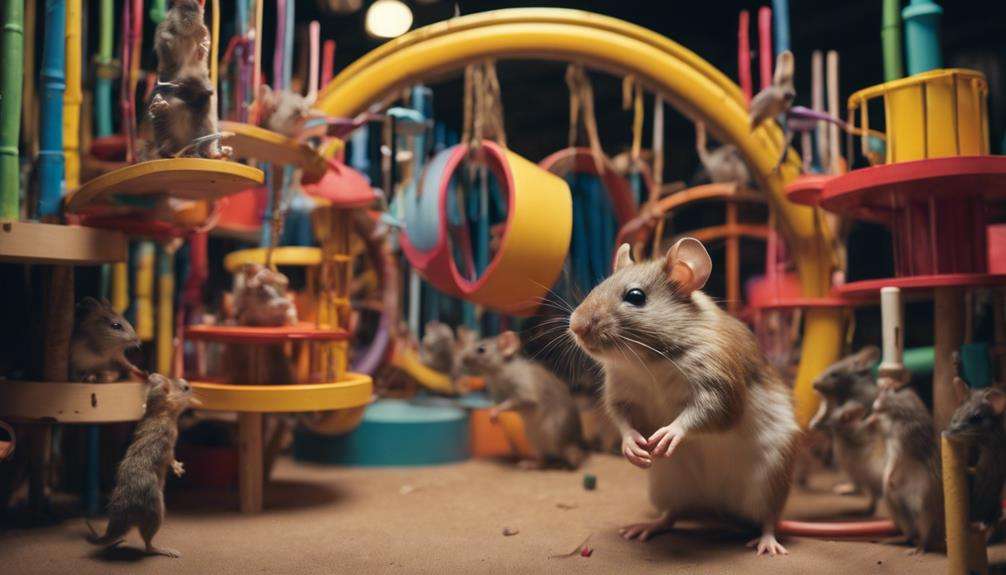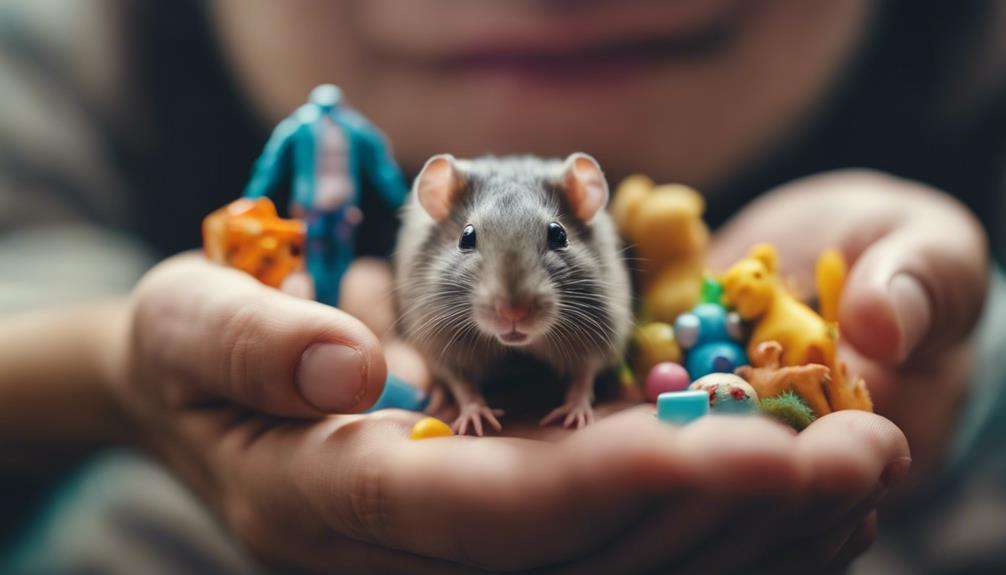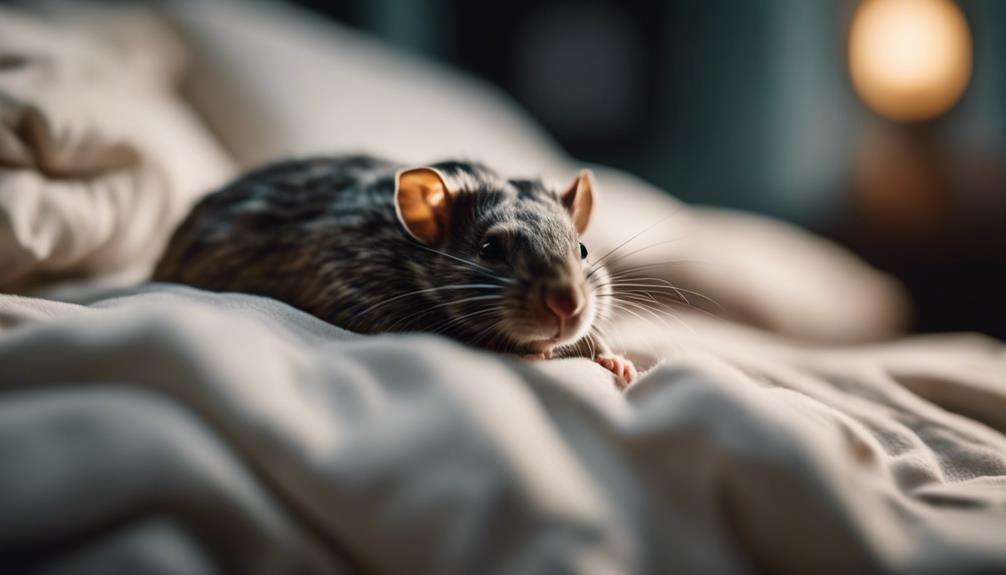You might think you've seen it all when it comes to rodent housing, but prepare to be surprised by the unconventional tips awaiting you.
Discover how to transform your rodent's living space into a paradise of enrichment and exploration like never before.
By following these innovative suggestions, you'll unlock a world of possibilities that will revolutionize the way you think about caring for your furry companions.
Key Takeaways
- Incorporate multi-level structures for climbing and exploration
- Use scent marks and tunnels for communication and play
- Stimulate nest-building with unconventional materials
- Provide mental stimulation, safety, and diverse environments for rodent well-being
Unique Housing Concepts
When considering unique housing concepts for your rodents, incorporating multi-level structures that utilize vertical space can enhance their natural climbing behaviors and provide increased living space. Mice are natural climbers and explorers, so having different levels in their habitat allows them to exhibit these behaviors.
One interesting aspect to consider is the use of scent marks within the multi-level structures. Rodents, including mice, use scent marks to communicate with each other, establish territories, and navigate their environment. By incorporating materials that retain and distribute scent marks, such as untreated wood or certain fabrics, you can create a more engaging and stimulating living space for your mice.
These scent marks not only serve as a form of communication but also provide a sense of security and familiarity for your rodents. So, when designing their multi-level habitat, remember to think about how scent marks can play a role in enriching their living environment.
Creative Cage Designs
To create an engaging and dynamic living space for your young mice, consider incorporating inventive cage designs that promote natural behaviors and mental stimulation. Here are some creative ideas to enhance their environment:
- Multi-Level Structures: Utilize cages with ramps and platforms to offer vertical space for climbing and exploration, mimicking their natural habitat.
- Tunnels and Hideouts: Include tunnels, hideouts, and hanging toys to encourage play and provide areas for your mice to retreat and feel secure.
- Transparent or Mesh Walls: Opt for cage walls made of transparent or mesh materials to ensure proper ventilation and visibility while maintaining a safe enclosure.
- Modular Systems: Use a modular cage system that allows for easy customization and rearrangement, keeping your young mice engaged and preventing them from becoming too accustomed to their surroundings.
Quirky Habitat Ideas
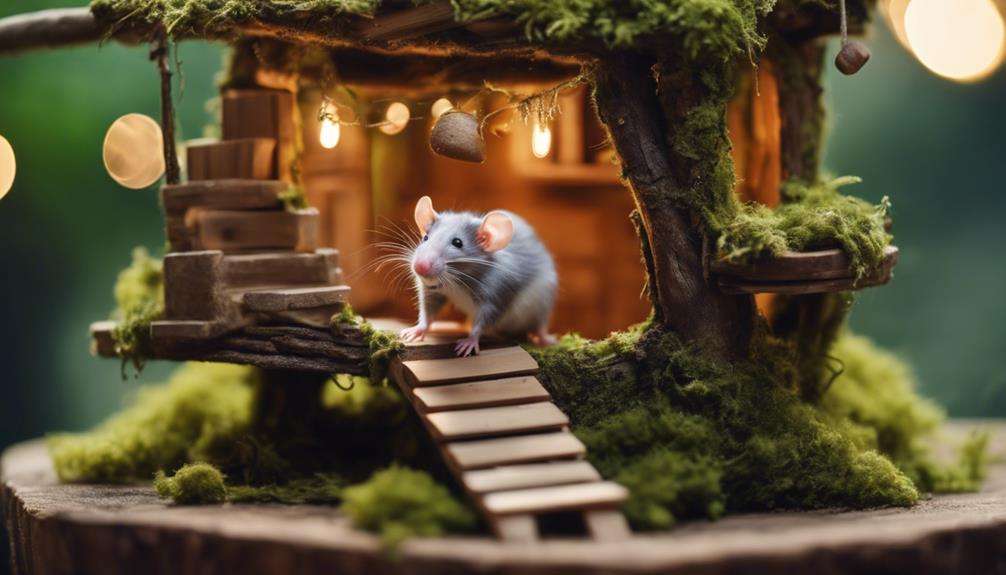
Consider incorporating unconventional materials like shredded paper, tissue, or fabric scraps as nesting material to stimulate natural nest-building behaviors in your mice. This not only provides them with a cozy place to rest but also encourages their instinctual behaviors.
Introduce unique hiding spots such as PVC pipes, small boxes, or cardboard tubes to create a diverse and engaging environment for your furry friends to explore. These hiding spots offer them a sense of security and a fun space to play in.
To keep your mice mentally stimulated and physically active, scatter food or treats in various locations throughout their habitat. This foraging activity taps into their natural instincts and keeps them entertained. Incorporating novel textures like felt, fleece, or grass mats can offer sensory enrichment for your mice, promoting activities like burrowing and exploring.
Remember to rotate and change the habitat setup periodically to prevent habituation and maintain their interest and engagement with their surroundings. By implementing these quirky habitat ideas, you can provide your mice with a dynamic and enriching living space.
Unconventional Rodent Dwellings
When considering unconventional rodent dwellings, think about unique habitats that offer creative housing solutions.
Multi-level cages, tunnels, and hanging hammocks can provide opportunities for exploration and exercise.
Unique Rodent Habitats
When contemplating unique dwellings for rodents, exploring the use of unconventional structures like clear plastic tunnels and hanging platforms can significantly enhance their habitat experience. To create a unique habitat for your rodent, consider the following:
- Utilize clear plastic tubes: Allow your rodent to exhibit natural burrowing and exploration behaviors.
- Incorporate climbing structures: Provide tree branches or climbing structures to promote physical activity and mental stimulation.
- Create multi-level habitats: Offer ramps or platforms for vertical movement and exercise opportunities.
- Introduce hanging hammocks: Provide cozy resting spots and encourage climbing and balancing activities.
Creative Housing Solutions
Exploring unconventional dwellings for rodents can provide enriching experiences that cater to their natural instincts and behaviors, fostering a stimulating environment for their well-being.
To create sensory-rich environments, consider utilizing vertical space with multi-level cages, incorporating tunnels, bridges, and platforms for exploration, and building custom enclosures with varied textures and hiding spots.
Implement rotating enrichment items like hanging toys, puzzle feeders, and foraging opportunities to prevent boredom and promote cognitive stimulation.
Additionally, introducing scents, sounds, and varying light levels can enrich your rodent's daily experiences and reduce stress levels in these unconventional housing setups.
Innovative Enclosure Setups
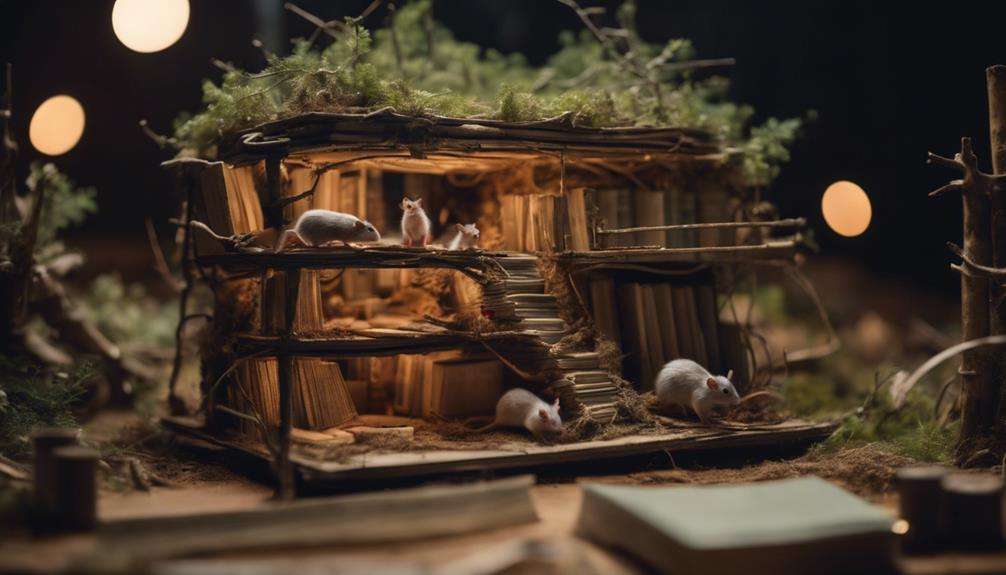
When designing innovative enclosure setups for your rodents, consider cage layout ideas that optimize space utilization and enhance their living environment.
DIY habitat designs offer a creative way to customize their enclosure, incorporating features like tunnels, platforms, and hiding spots to cater to their natural instincts and behaviors.
Cage Layout Ideas
For creating innovative enclosure setups in rodent cages, consider incorporating multi-level designs with ramps and platforms to enhance climbing opportunities and exploration for the mice. When planning the layout of the cage, keep in mind the natural behaviors of mice, such as scent marking, and provide features that cater to their instincts. Here are some ideas to optimize your cage layout:
- Tunnels and Tubes: Create a network of tunnels and tubes to mimic underground burrows, allowing mice to engage in natural behaviors.
- Hammocks and Platforms: Offer hanging hammocks or suspended platforms to provide elevated resting spots and promote environmental enrichment.
- Modular Systems: Experiment with modular cage setups to customize layouts and create diverse activity zones for your mice.
- Interactive Toys: Introduce puzzle feeders, running wheels, and interactive toys to stimulate physical activity and cognitive engagement in your furry friends.
DIY Habitat Designs
To create engaging and stimulating environments for your rodents, consider incorporating innovative DIY habitat designs that utilize multi-level structures, tunnels, platforms, and enrichment items. These DIY habitats can include materials like PVC pipes, cardboard, and mesh to encourage natural behaviors and physical activity in your pets. By customizing the habitat with nesting areas, hiding spots, and foraging opportunities, you can promote their well-being.
Enrichment items such as hanging toys, climbing ropes, and tunnels within the DIY setup can enhance cognitive stimulation and prevent boredom. DIY habitat designs offer flexibility in size, shape, and complexity, providing creative and cost-effective alternatives to traditional rodent enclosures while ensuring your pets have a stimulating environment filled with cage enrichment.
Eclectic Living Spaces
Consider incorporating unconventional materials like shredded paper, tissue, or fabric scraps into your mice's living space to encourage natural nest-building behaviors. This enrichment activity not only taps into their instinctual behaviors but also provides them with a cozy and stimulating environment.
To further enhance your mice's eclectic living space, here are some practical tips:
- Create Hideouts: Utilize items like PVC pipes, cardboard tubes, or small boxes to offer hiding spots or tunnels for your mice to explore, promoting a sense of security and adventure.
- Add Climbing Options: Hang hammocks or ropes within the cage to give your mice opportunities to climb and rest, fostering exercise and mental stimulation.
- Scent Stimulation: Introduce scents like herbs or non-toxic essential oils on safe materials to engage your mice's sense of smell, making their living space more enriching.
- Rotate Enrichment: Regularly change the placement of enrichment items to prevent habituation, encouraging continuous mental engagement and activity for your mice.
Original Rodent Habitats
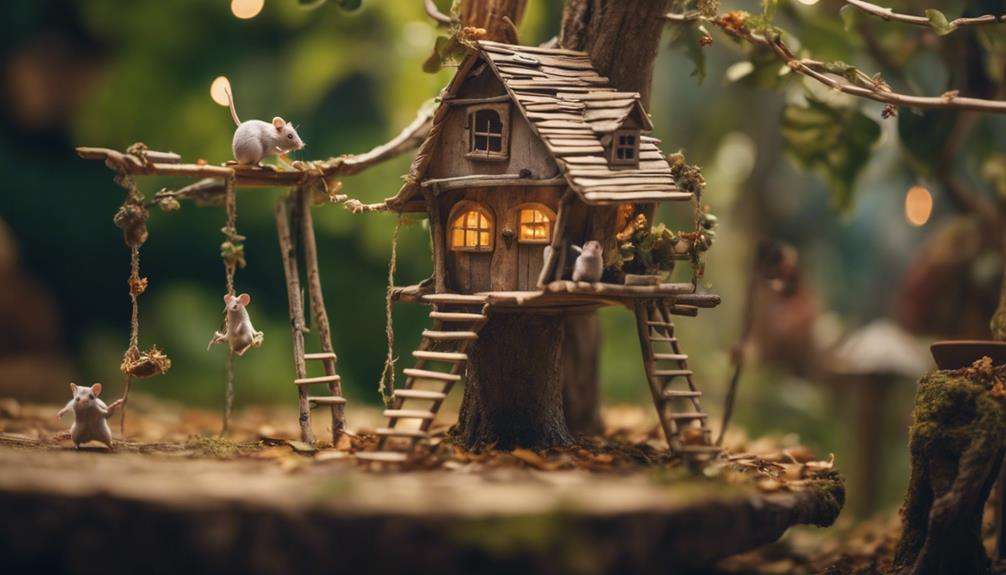
To cater to your rodent's natural instincts and well-being, understanding their original habitats is crucial for designing enriched living environments that mimic their wild environment. Original rodent habitats can vary significantly depending on the species, ranging from burrows to tunnels or tree nests in the wild. These habitats play a vital role in providing natural enrichment opportunities for foraging, nesting, and social interactions among rodents. Mimicking these natural environments in captivity is essential for promoting their overall health and mental stimulation.
When creating original rodent habitats, consider incorporating elements that stimulate their sense of smell, such as natural substrates like soil or bedding materials that retain scents. Providing hiding spots and climbing structures can also help simulate their natural behaviors and encourage exploration. By replicating aspects of their original habitats, you can enhance the well-being of captive rodents and ensure they lead fulfilling lives in captivity.
Offbeat Shelter Solutions
For an unconventional approach to mouse shelter solutions, think outside the box and experiment with using materials like cardboard boxes, PVC pipes, or terracotta pots. These offbeat shelter solutions can provide enrichment opportunities, encouraging exploration and stimulating natural behaviors in mice.
To create a dynamic environment for your furry friends, consider the following:
- DIY Mazes: Construct intricate mazes using cardboard boxes and tubes to promote mental stimulation and physical activity for your mice.
- Hiding Spots: Utilize terracotta pots or overturned plant saucers as cozy hiding spots, offering mice a sense of security and privacy.
- Vertical Spaces: Incorporate PVC pipes as tunnels or climbing structures to encourage vertical movement and exercise for your mice.
- Rotating Hideouts: Regularly change and swap out shelter items to prevent habituation, keeping your mice engaged and preventing boredom.
Frequently Asked Questions
What Are 3 Ways to Effectively Control Rodents?
To effectively control rodents, you should focus on rodent control methods like sealing entry points, using ultrasonic devices, and maintaining proper sanitation. These strategies help prevent rodent infiltration, deter them, and eliminate attractants, reducing their population.
What Is an Ideal Housing Situation for a Pet Rodent?
For your pet rodent, a perfect housing setup involves a spacious cage with room to climb, explore, and nest. Keep them engaged with tunnels, wheels, and chew toys. Regular cleaning, ideal temperature, and social interactions are key.
How Do I Make My House Rodent Proof?
To make your house rodent-proof, seal gaps with steel wool or caulk, store food in airtight containers, trim branches near your home, keep firewood away, and maintain window screens. Consider using rodent repellents for added protection.
What Smell Do Mice Hate the Most?
You hate the smell of peppermint, right? Well, mice feel the same way! They can't stand peppermint, making it a powerful repellent. Keep those critters away with a scent they detest.
Conclusion
Incorporate these unconventional rodent housing tips to create a unique and stimulating environment for your furry companions.
From quirky habitat ideas to innovative enclosure setups, your rodents will thrive in their offbeat shelter solutions.
So, don't hesitate to think outside the box and give your pets a home that's as original and eclectic as they are.
Your furry friends will thank you for it!
